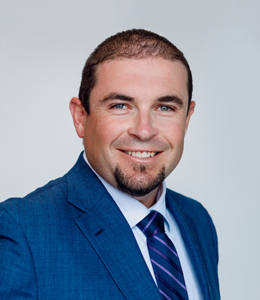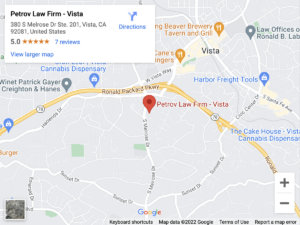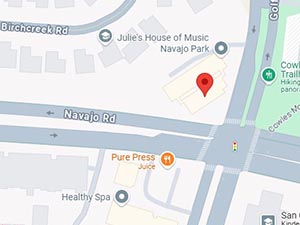
A personal injury case typically arises when someone injures you through culpable conduct (generally intentional misconduct or negligence). Sometimes, however, a personal injury defendant is liable even if you never prove that they were at fault for the accident. That is the case for some types of personal injury practice areas. In Vista, personal injury cases are governed by California state law.
Settlement vs. Litigation

Negotiation resolves most personal injury cases with no need to involve a court. Only a small percentage of cases make it all the way to trial. Many personal injury victims, however, file lawsuits for personal injury claims that eventually settle out of court. The reasons why a plaintiff (an injury victim) might file a lawsuit even though they still hope to avoid a trial include:
- It puts pressure on the defendant to settle. Sooner or later, the court will schedule a trial, and that starts the clock ticking. Most defendants don’t want a trial either.
- It beats the statute of limitations deadline. After you file a lawsuit and notify the defendant through the proper channels, you will never again have to worry about missing the statute of limitations.
- It gains you access to the pretrial discovery process. Once discovery begins, both sides can demand evidence from the other. This process can dramatically change the balance of power in negotiations. In a best-case scenario, it will reveal enough evidence to force the defendant to issue a generous settlement offer to avoid a certain defeat in court.
The reality is that when trying to resolve a personal injury claim, negotiating skills are at least as important as litigation skills. Nevertheless, you need a lawyer with a strong track record of winning in court. Otherwise, the defendant will have no reason to negotiate with you. After all, if you can’t win in court, why bother negotiating?
Theories of Liability
Why is the defendant responsible for paying your claim? Depending on the facts of your case, you might assert various theories of liability, as discussed below.
Negligence
Negligence is by far the most common theory of liability. The word “negligence” means something like “carelessness,” but it is quite a bit more specific. To hold someone liable for negligence, you must prove the following for legal elements:
- The defendant owed you a duty of care. Just about everyone owes everyone else the duty to conduct their day-to-day affairs with reasonable care so as not to injure them. Everyone has a duty to drive carefully, for example. Some professionals, such as doctors, have an elevated duty of care while they are practicing their profession.
- The defendant breached their duty of care. A defendant who violates their duty of care in any way behaves negligently. Nonetheless, proving negligence is technically not enough to entitle you to compensation all by itself.
- You suffered harm. Although the typical personal injury claim involves a physical injury, emotional trauma is sufficient in certain cases.
- The defendant’s negligence (duty of care + breach of duty) was a substantial cause of the harm you suffered. You must prove “but for” causation, meaning that but for the defendant’s negligence, you would not have suffered harm. You must also prove proximate causation, which means that given the defendant’s negligence, the harm you suffered was a foreseeable consequence.
You must prove all four of these elements to win your claim.
Strict Liability
Strict liability means liability without fault. There are two common scenarios where California applies strict liability:
- You suffer injury due to a defective, unreasonably dangerous product. A lighter explodes and burns you, for example, or a prescription medication makes you sick. The product does not have to belong to you for you to pursue a claim.
- A dog bites you in a public place or in a private place where you are not trespassing. Naturally, you cannot sue the dog, but you can sue the dog’s owner.
The rationale behind strict liability is that between two innocent parties, the victim should not be the one to bear liability for the harm.
Intentional Misconduct
If a motorist hits your car because they were busy texting while driving, it is only fair that they should bear liability. Suppose, then, that someone deliberately rams your car in a fit of “road rage”?
These kinds of intentional misconduct also trigger liability. A common problem with enforcing such claims is that insurance companies typically don’t cover intentional misconduct, and the at-fault party seldom has the resources to pay such a claim.
A skilled lawyer might be able to find a way to navigate around this problem. If you were mugged inside of a parking structure, for example, your lawyer might suggest suing the management of the structure for negligent security.
Vicarious Liability
Vicarious liability describes a situation where one party bears liability for the misconduct of another. The most common circumstances that trigger vicarious liability are:
- An employer’s liability for the misconduct of their employee. The employee must have been acting within the scope of their work duties at the time the misconduct occurred.
- California sometimes holds parents liable for the consequences of their children’s misconduct. This liability doesn’t depend on negligent parental supervision. The parents themselves don’t have to be at fault to bear liability.
One of the reasons for vicarious liability is that personal injury victims need to find a defendant with the financial means to pay a claim.
Statutory Limits on Damages
Generally speaking, California places no artificial limits on how much compensation you can win. The only exception is medical malpractice claims. In a medical malpractice claim, you can win as much in economic damages as the facts of your case warrant. By contrast, California limits non-economic damages to $350,000 for personal injury claims and $500,000 for wrongful death claims.
The cap on non-economic damages is only $250,000 for cases filed in 2022 or earlier. For cases filed in 2024 or later, the caps will gradually increase. They will top out in 2033 at $750,000 for personal injury claims and $1,000,000 for wrongful death claims.
Types of Compensation
You might win any or all of the following types of personal injury compensation, depending on the facts of your case:
- Property damage;
- Past, present, and future medical expenses;
- Past, present, and future lost earnings;
- Pain and suffering;
- Emotional distress and mental anguish;
- Loss of consortium (emotional intimacy and sexual relations);
- Loss of ability to enjoy life;
- Disfigurement; and
- Inconvenience.
Your compensation is not necessarily limited to these items. If you win your claim, you will qualify for compensation for all of your losses, both tangible and intangible.
An Experienced Vista Personal Injury Lawyer Can Help
Not everyone realizes that most Vista personal injury lawyers won’t charge you attorney’s fees unless you win. In most cases, they will also advance any case expenses, such as court fees or expert witness fees, which you pay back only if you win. In personal injury law, it is the quality of your claim that matters, not the size of your bank account.
Contact Petrov Personal Injury Lawyers by filling out our online contact form or calling our office 24/7 at (619) 344-0360 to get legal assistance today.


